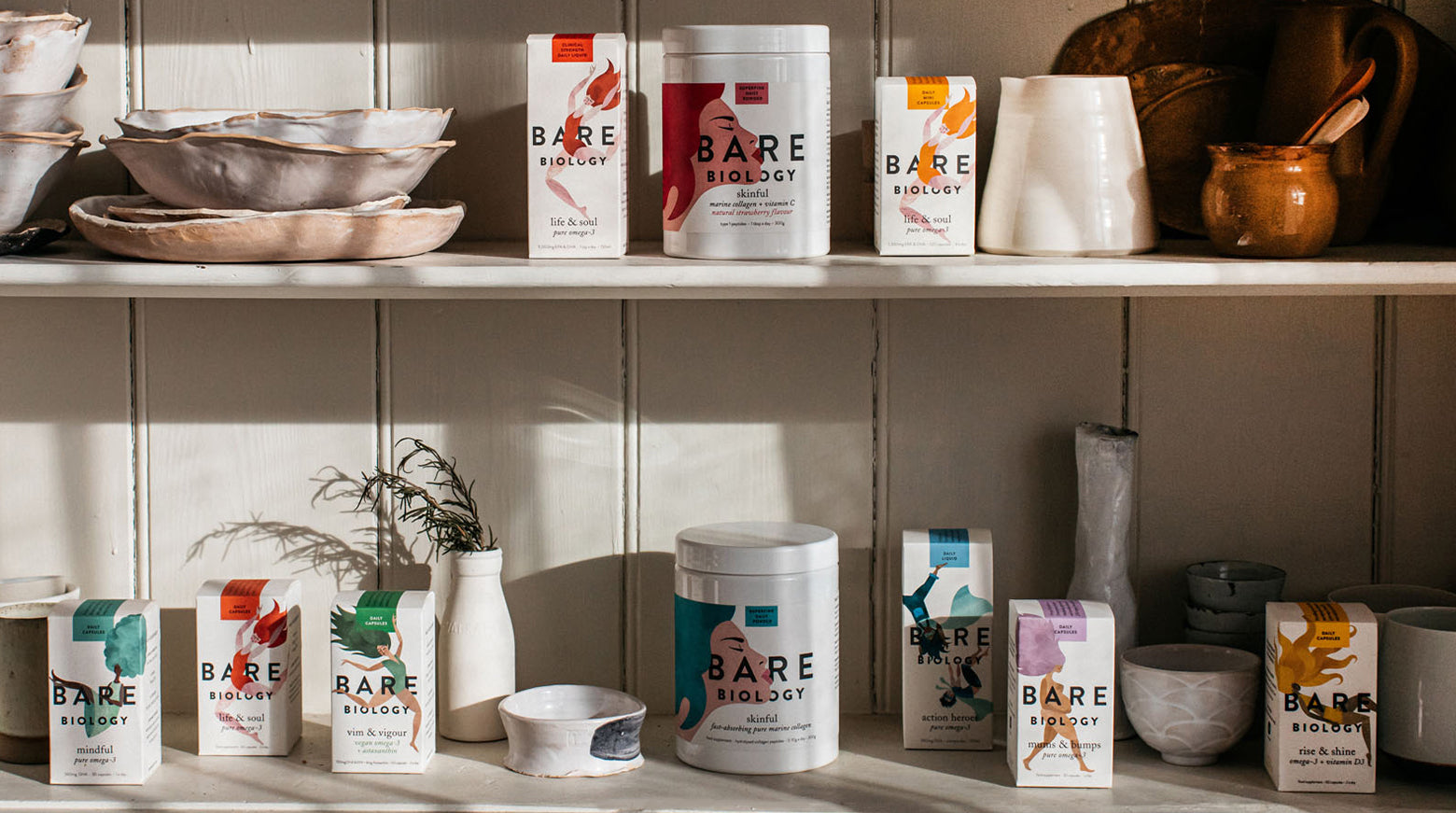How balanced is your life? Forget the daily juggle of work and life for a second, because we’re talking about your diet and, in particular, the good sources of Omega 3, 6 and 9 it provides.
You may have heard of these essential fatty acids before and even seen Omega 3 6 9 capsules for sale in the chemist. But is getting maximum amounts of all three what we should be aiming for? The more Omega fats you can cram in during the course of the day the better, right?
Well not exactly. When it comes to your health it’s the ratio of all three working together that matters most. If it’s all starting to sound a bit of a numbers’ game, our guide to Omega 3 6 9 fatty acids can help. It has all the answers you need to navigate this healthy trio.
The difference between Omega 3, 6 & 9
Why do the different Omega fats have different numbers and what’s the difference between them? It’s all down to the various Omega 3 6 9 structures, as nutritionist Catherine Collins explains.
“All fats are named according to whether they have any unsaturated bonds in their chain,” she told us. “Saturated fats (for example processed meat, butter and cheese) contain no unsaturated bonds. Monounsaturated fats (like avocado, olives and nuts) have one that occurs at the ninth double bond – hence the name Omega 9. Polyunsaturated fats (like oily fish and vegetable oils) are named according to where the first double bond occurs in the carbon backbone of the fat – which is either 3 or 6.”
Omega 3 and Omega 6 have quite a lot in common. Both are essential fatty acids
(EFAs), because they are necessary for human health, but our bodies cannot make them for themselves. Omega 9 fats are called “non-essential” because our bodies can produce them from any unsaturated fat we eat. The main Omega 9 in our diets is called oleic acid, found primarily in oils such as olive and peanut oil.
Omega 3 6 9 benefits
The body uses Omega 3, 6 and 9 in different ways:
Omega 3 and 6 are the only two fatty acids we can’t make for ourselves. They’re both used by the body for growth and repair. Omega 3 and 6 help build cell membranes and are precursors to many other substances in the body, such as our hormones. In balanced amounts, Omega 3 and 6 complement each other perfectly. While Omega 6 increases inflammation (very important when it comes to your immune system), helps your blood to clot and cells to proliferate, Omega 3 does the opposite. They both work together to keep the body in check.
Omega 9 can be used by the body when Omega 3 and 6 fatty acids aren’t readily available. If you have low levels of Omega 3 and 6, the body will use Omega 9 instead. It’s a bit like using hand cream on your face because you’ve run out of your anti-ageing serum. It will do the
job, but not quite as well. However, foods rich in the Omega 9 fat oleic acid such as olive oil are recommended as part of a heart-healthy Mediterranean diet.
Omega 3 6 9 sources
There was once a time when Omega 3 could be found in plentiful amounts in many of the foods we ate - in the eggs of free-roaming chickens and in the meat and dairy products we got from our grass-fed cattle. The advent of industrialised agriculture changed all this. Our chickens, cows and sheep are now fed with grain rather than their natural diets and, as a result, this essential fatty acid has quietly slipped out of our daily diets.
The main source of Omega 3 these days is oily fish - great if you love tucking into wild salmon and fresh sardines each night, but not so great if the only fish you like is rectangle-shaped and covered in breadcrumbs.
Nuts, flax, avocado and chia do contain small amounts of a precursor to Omega 3 called ALA. This can be converted by the body into EPA and DHA (the beneficial components of Omega 3) but not very efficiently. Less than 2% of ALA is converted to EPA by the liver and less than 0.5% of ALA is converted to DHA.
Omega 6, on the other hand, is rather more prevalent. It’s found in vegetable oils and because this kind of fat is cheap and has a long shelf life, it’s in virtually all processed foods, from crisps and biscuits to healthier sounding options like granola and hummus.
There are various different kinds of Omega 9. Oleic acid is a monounsaturated fat found in olive oil, poultry fat and lard. Erucic acid is a monounsaturated fat that is found in rapeseed, canola oil and mustard oil, while nervonic acid is a monounsaturated fat that is found in salmon, nuts (especially macadamias) and seeds.









/cdn.cliqueinc.com__cache__posts__253119__vegetarian-ketogenic-diet-253119-1521837946564-main.700x0c-4d3caf865cf84c9b87daa07b6c09f07c.jpg)

